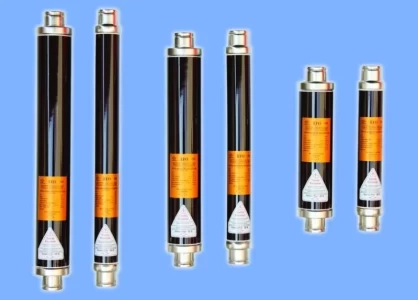Selectivity in Low Voltage Fuse Systems
Selectivity, or discrimination, in low voltage fuse systems is a critical design and operational aspect, ensuring that only the faulty circuit is disconnected when a fault occurs, thereby minimizing the impact on the rest of the electrical system. This concept is essential for maintaining the reliability and efficiency of low voltage networks, particularly in complex industrial, commercial, and residential installations.
The Significance of Selectivity
Selectivity, also known as discrimination or coordination, ensures that a fault event triggers the interruption only on the circuit segment closest to the fault location. This minimizes the impact on the overall system by:
Maintaining Power Supply: Healthy circuits downstream from the fault remain energized, minimizing disruptions to critical equipment and personnel.
Reduced Downtime: Isolating the fault to a specific circuit allows for faster restoration of power to unaffected areas.
Minimized Equipment Damage: Limiting the fault current exposure to downstream equipment reduces the risk of damage and costly repairs.
Improved Safety: By preventing widespread power outages, selectivity minimizes the potential safety hazards associated with electrical faults.
Challenges in Achieving Selectivity
Ensuring selectivity can be challenging due to the need for precise coordination between different protective devices, such as fuses, circuit breakers, and relays. These devices must be carefully selected and configured to respond appropriately to various fault conditions.
Design and Technical Considerations
Current Rating and Time-Current Characteristics
A critical factor in achieving selectivity is the proper selection of current ratings and understanding the time-current characteristics of fuses. These characteristics determine how fast a fuse will operate under different current conditions, influencing the coordination between devices in the system.
System Configuration and Load Analysis
The electrical system's configuration, including the types and locations of loads, plays a significant role in designing a selective fuse system. A thorough analysis of the system’s load characteristics and fault potential is necessary to ensure that fuses are selected and placed correctly to achieve optimal selectivity.
Methods for Achieving Selectivity
Several methods can be employed to achieve selectivity in LV fuse systems:
Time-Current Coordination (TCC) Curves: Manufacturers provide TCC curves for their fuses, which depict the relationship between current and clearing time. By carefully selecting fuses based on their TCC curves, engineers can ensure that the downstream fuse operates before the upstream fuse within the desired time frame.
Current Limiting Fuses: These fuses are designed to interrupt high fault currents very quickly, limiting the amount of energy available to upstream fuses. This allows downstream current limiting fuses to clear the fault before the upstream fuse even experiences a significant overcurrent condition.
Cascading Fuse Sizes: A common approach involves selecting upstream fuses with higher current ratings compared to downstream fuses. This ensures that the fault current surpasses the downstream fuse rating first, triggering its interruption before the upstream fuse comes into play. However, this method should be applied judiciously to avoid exceeding the cable ampacity.
Benefits of Selective Low Voltage Fuse Systems
Minimized Operational Disruption
Selective fuse systems localize faults, minimizing the impact on the overall system and reducing operational disruptions. This selectivity is crucial for facilities that require continuous operation, such as hospitals, data centers, and manufacturing plants.
Enhanced Safety and Protection
By isolating only the affected portion of the system, selective fuse systems enhance the safety of the electrical network, protecting both personnel and equipment from potential damage caused by faults.
Reduced Downtime
Isolating faulty circuits minimizes downtime associated with fault events, leading to increased operational efficiency.
Improved Safety
By isolating faults and preventing widespread outages, selectivity contributes to a safer electrical environment.
Ensuring selectivity in low voltage fuse systems is a critical aspect of electrical system design and operation, vital for minimizing downtime and enhancing safety. Despite the challenges and complexities involved, the benefits of a well-coordinated selective fuse system—such as improved reliability, safety, and efficiency—justify the investment in careful planning, design, and maintenance. As electrical installations continue to evolve in complexity, the importance of selectivity in low voltage systems becomes increasingly paramount, demanding ongoing attention to detail and a deep understanding of electrical protection principles.

